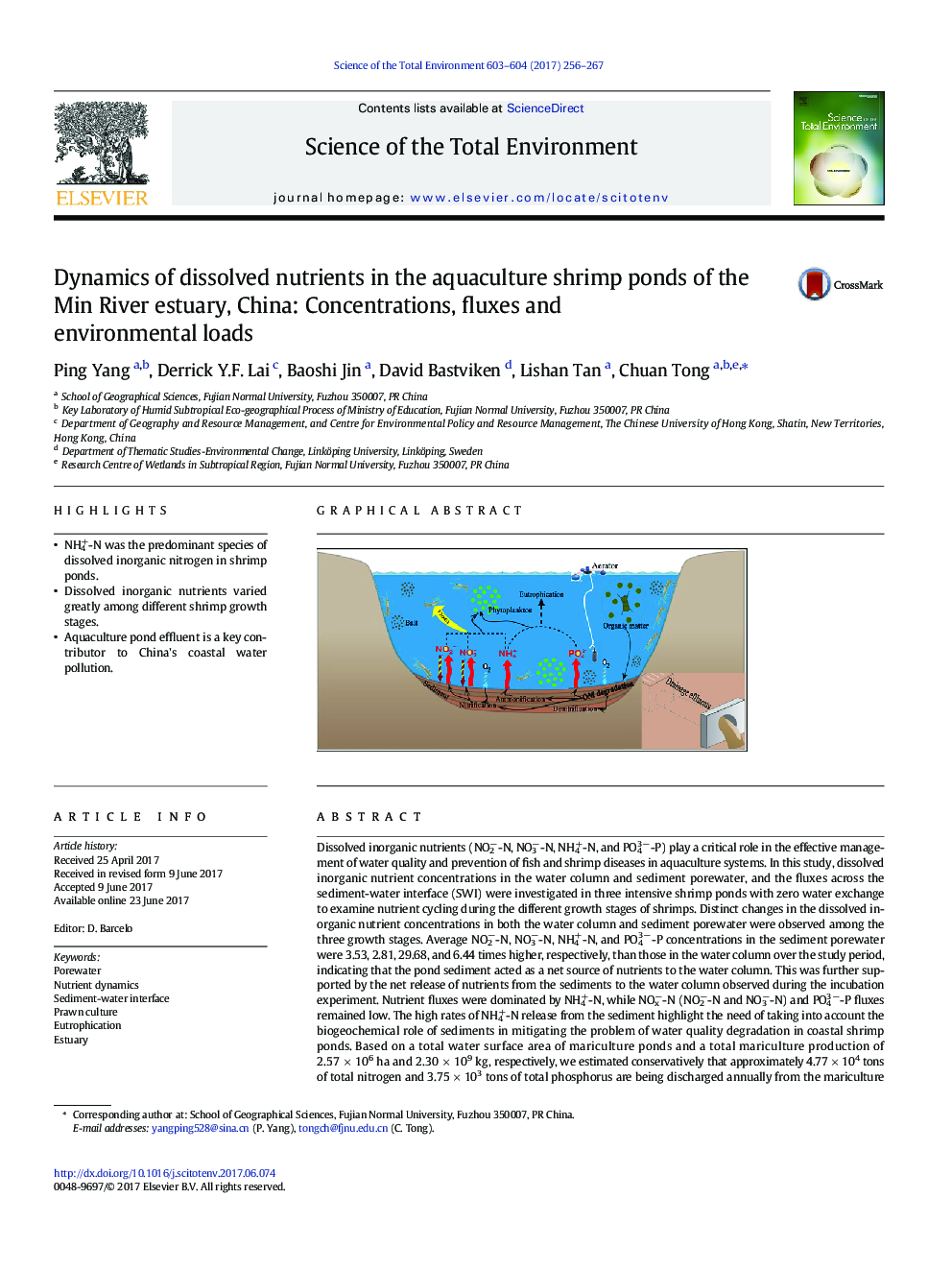| کد مقاله | کد نشریه | سال انتشار | مقاله انگلیسی | نسخه تمام متن |
|---|---|---|---|---|
| 5750296 | 1619696 | 2017 | 12 صفحه PDF | دانلود رایگان |
- NH4+-N was the predominant species of dissolved inorganic nitrogen in shrimp ponds.
- Dissolved inorganic nutrients varied greatly among different shrimp growth stages.
- Aquaculture pond effluent is a key contributor to China's coastal water pollution.
Dissolved inorganic nutrients (NO2â-N, NO3â-N, NH4+-N, and PO43Â â-P) play a critical role in the effective management of water quality and prevention of fish and shrimp diseases in aquaculture systems. In this study, dissolved inorganic nutrient concentrations in the water column and sediment porewater, and the fluxes across the sediment-water interface (SWI) were investigated in three intensive shrimp ponds with zero water exchange to examine nutrient cycling during the different growth stages of shrimps. Distinct changes in the dissolved inorganic nutrient concentrations in both the water column and sediment porewater were observed among the three growth stages. Average NO2â-N, NO3â-N, NH4+-N, and PO43Â â-P concentrations in the sediment porewater were 3.53, 2.81, 29.68, and 6.44 times higher, respectively, than those in the water column over the study period, indicating that the pond sediment acted as a net source of nutrients to the water column. This was further supported by the net release of nutrients from the sediments to the water column observed during the incubation experiment. Nutrient fluxes were dominated by NH4+-N, while NOxâ-N (NO2â-N and NO3â-N) and PO43Â â-P fluxes remained low. The high rates of NH4+-N release from the sediment highlight the need of taking into account the biogeochemical role of sediments in mitigating the problem of water quality degradation in coastal shrimp ponds. Based on a total water surface area of mariculture ponds and a total mariculture production of 2.57Â ÃÂ 106Â ha and 2.30Â ÃÂ 109Â kg, respectively, we estimated conservatively that approximately 4.77Â ÃÂ 104Â tons of total nitrogen and 3.75Â ÃÂ 103Â tons of total phosphorus are being discharged annually from the mariculture ponds into the adjacent coastal zones across China. Results demonstrated the importance of aquaculture pond effluent as a major contributor of water pollution in the coastal areas of China, and called for actions to properly treat these effluents in alleviating the eutrophication problem in the Chinese coastal zones.
119
Journal: Science of The Total Environment - Volumes 603â604, 15 December 2017, Pages 256-267
